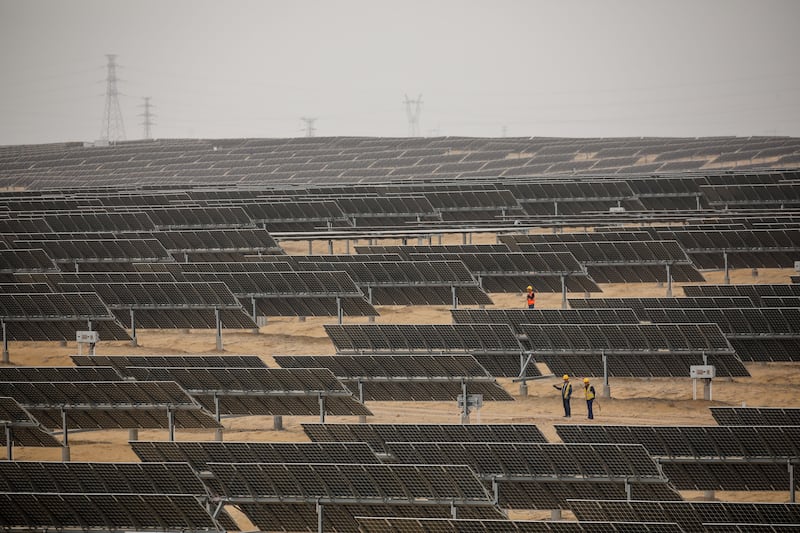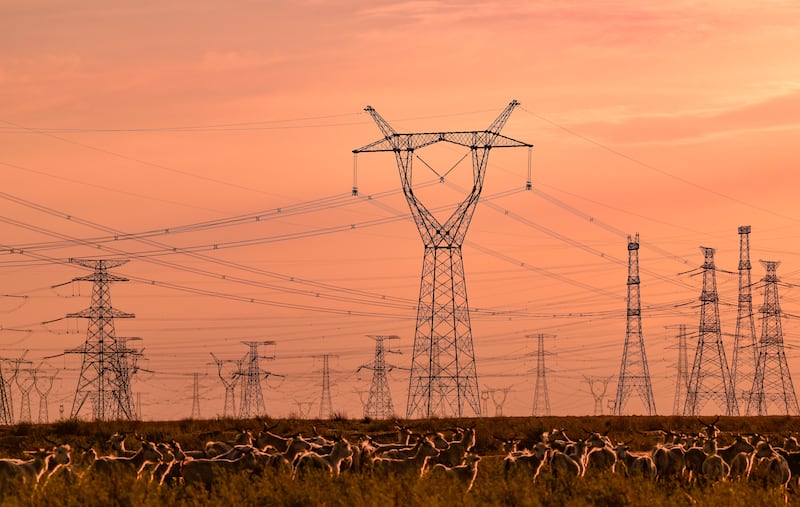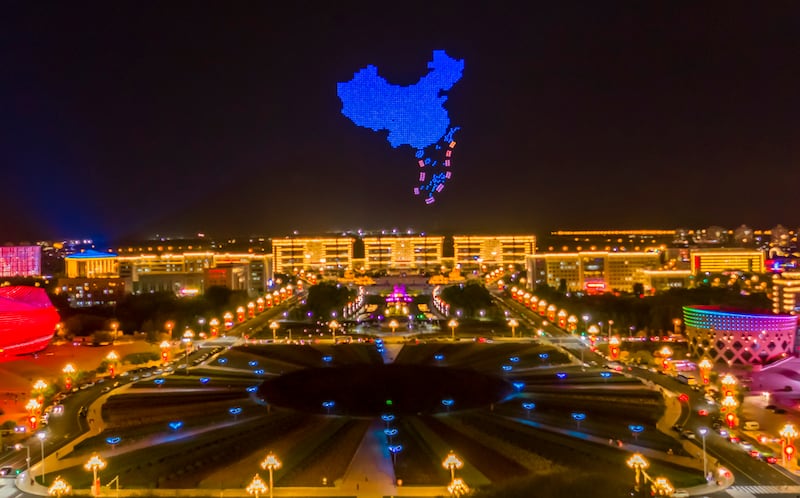In the Batuta coal mining subsidence area near Ulan Mulun in Inner Mongolia, the fields are black as they gleam under the early summer sun. Stretching out to the horizon, they are covered not with coal but with row after row of solar photovoltaic panels that lean backwards as they face the sun.
The project, which aims to reach a capacity of 500,000 kilowatts, is part of a coal mining regeneration scheme that also involves the ecological restoration of the land for agricultural use and tourism. Until recently, almost all of Inner Mongolia’s electricity was generated by coal-fired power stations, but when Xi Jinping spent two days there this week, his focus was on green energy, low-carbon development and the fight against desertification.
Climate change has seen the number of sandstorms in China increase over the past two decades, with most storms moving from the deserts of Inner Mongolia southwards towards Beijing and other big cities in the east of the country. Xi praised desertification prevention and control efforts that include the large-scale planting of trees to slow down the sandstorms.
He said that the work had produced a historic transformation from “sand forcing humans to retreat” to “trees forcing sand to retreat”, according to People’s Daily.
READ MORE
“This has led to building a virtuous cycle of ecological protection and improvement of people’s livelihoods, bringing about an earth-shaking change in the economic, social and ecological landscape of desertified regions,” the paper quoted him as saying.
Like Tibet and Xinjiang, Inner Mongolia is an autonomous region rather than a province of China, with an enhanced level of self-government but no right to secede. Stretching from the Russian border in the north-east to Xinjiang in the west, Inner Mongolia accounts for almost an eighth of China’s land mass but it is relatively sparsely populated, with about 25 million people.

Four in five are Han, the same ethnic group as more than 90 per cent of the Chinese population, and about a fifth are Mongol. After years of turbulence following the collapse of the Qing Dynasty in 1911, Outer Mongolia broke away from China in 1924 to form the independent state of Mongolia to the north.
Inner Mongolia remained part of China and unlike in Xinjiang and Tibet, there has not been a significant independence movement there since the People’s Republic of China was established in 1949. Mongolian identity is visible throughout the region, however, not least in the celebration of Genghis Khan, whose mausoleum is outside the city of Ordos.
[ China arrests tour group over Genghis Khan video (2015)Opens in new window ]
In the centre of Ordos, giant statues of Genghis Khan show him on horseback or driving forward the army that helped him unite the Golden Horde and build a Mongol Empire that stretched from Siberia to the Danube and the Black Sea. Street signs in Ordos are written in Mandarin and in Mongolian, in the script created by Genghis Khan.
Notorious a decade ago for its ghost city of Kangbashi, Ordos has recovered in recent years and the wealth of natural resources nearby has helped to make it one of China’s wealthiest places measured by GDP per capita. The city has some of the best schools in the country and in the Compass Youth Development Centre, a lavishly appointed after-school centre covering 11,000sq m with 110 full-time staff.
The centre offers more than 400 courses in science and technology, art and culture, languages, dance and sport. Children dressed in blue, red and white tracksuits with red kerchiefs operate in groups as they learn everything from assembling a battery-operated appliance to making a small parachute.
Some of the children are ethnic Mongolians but most are Han Chinese and the classes are conducted in Mandarin.

“What we hope is for our minority children and Han Chinese children to learn together. And we are more focused on inheriting the excellent traditional culture of our Chinese nation. In the awe of this excellent traditional culture, let children love their Motherland and the Party together,” said Zhang Rong, director of publicity and outreach at the centre.
“This is a social activity, not study but an exercise activity. This is not compulsory education.”
There are Mongolian-language schools where much of the curriculum is taught in Mongolian, and language and traditional music courses are available throughout Inner Mongolia. But the language is a sensitive issue and changes to the curriculum for Mongolian-language schools sparked protests in 2020.
The changes meant that, although all classes in such schools would be taught through Mongolian for the first two years, an increasing number would be in Mandarin after that. The subjects of Language and Literature, Morality and Law, and History would from now on be taught through Mandarin using standard national textbooks.
Similar reforms had already been implemented in Tibet and Xinjiang but earlier attempts to introduce them in Inner Mongolia had been abandoned. This time, Beijing pushed through the changes, which chimed with a new approach to ethnic minorities that played down the Soviet-style autonomy built into China’s constitutional structure in favour of a depoliticised ethnic policy similar to that in the United States, where minorities have the right to equal treatment but have no territorial autonomy or state-backed cultural support.

During his visit to Inner Mongolia this week, Xi spoke of the importance of ensuring that ethnic minorities benefited from the Chinese Communist Party’s common prosperity policies.
“These border ethnic areas cannot fall behind on the road to common prosperity. We must adhere to the people-centered approach, pay more attention to ensuring and improving people’s livelihood in development, make up for shortcomings in people’s livelihood, enhance people’s well-being, and let people of all ethnic groups truly feel that common prosperity is in action and nearby,” he said.
“We must improve the multi-level social security system, promote the expansion of insurance coverage, increase social assistance, medical assistance, subsistence allowances and support measures for families in difficulty, and develop elderly care services and industries.”
But he identified “fortifying the consciousness of the Chinese national community” as the central theme of the Party’s ethnic policy. The economic, political, cultural, social, ecological and Party constructions in ethnic regions should all closely revolve around and never deviate from this central theme.
“Whether introducing laws and regulations or policy measures, the aim should be to reinforce the commonality of the Chinese nation and enhance the sense of the Chinese national community. We should unswervingly and comprehensively implement the use of nationally compiled textbooks, ensuring that young people from all ethnic groups master and use the national common language and script. We should co-ordinate urban and rural construction planning and the allocation of public service resources to create more perfect social conditions for people of all ethnic groups to live, learn, build, share and enjoy together,” he said.




















